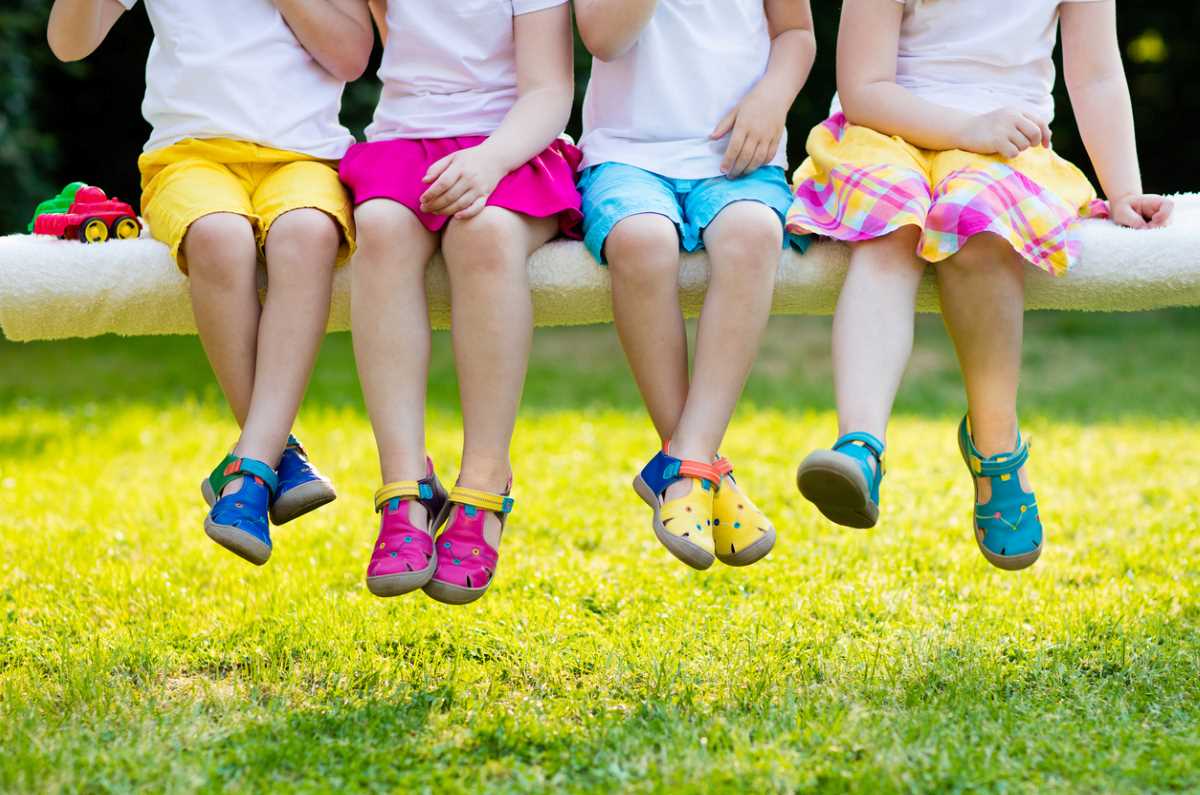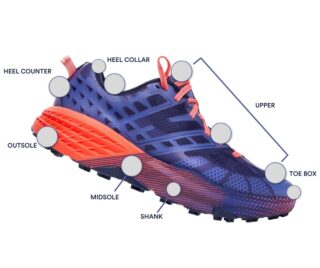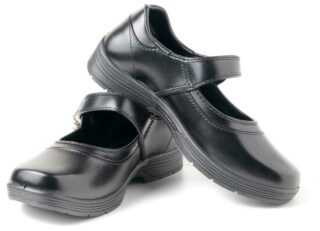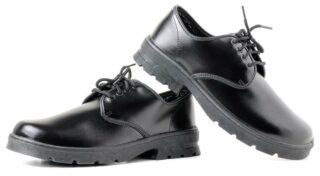Choosing the right footwear
February 21, 2023 by Musculoskeletal Health Australia

To manage foot and lower limb pain in children
Guest blog written by podiatrist Daniel van Hoof-Harkin, B. Pod (Hons)
When a child starts to complain of pain in their legs or feet for whatever reason – after activity, ‘growing pains’ at night, or joint inflammation caused by a condition like juvenile arthritis (JIA) – often the first thing I’ll look at is their footwear. Specifically, what footwear they wear and when and how they wear them. I’ll then spend time discussing and trying to recommend footwear. That’s because good shoes can be a first-line treatment in relieving pain.
To help you choose the best footwear for your child, here are my suggestions for things to look for.
Getting the right support 
To a large extent, you get what you pay for with shoes. Cheaper shoes are usually made with lower quality materials and have less support than more expensive footwear. This is why quality shoes can cost significantly more.
When I look at a pair of shoes for someone in pain, I’m looking primarily at four things:
- Heel pitch – Also known as drop or offset, it is the difference in height between the heel and forefoot within the shoe. Ideally, shoes should have approximately 10mm, as this helps to reduce the effects of reduced ankle range of motion, or for high arched people whose forefoot sits lower than their heel.
- Torsional rigid shank – This is the stiffness of a shoe between the heel and the forefoot and helps to stabilise mobile feet, especially on graded surfaces.
- Heel counter – This is usually a piece of plastic that wraps around the heel in shoes and helps to reduce inversion and eversion of the rearfoot during lower impact activities.
- Upper fixation – This will normally be achieved with either Velcro or laces, but also aided by the upper of a shoe.
Most brand-name sneakers will have all of these qualities, which will help support the feet and legs of children, whether they’re walking or running. However, if a shoe lacks any of these qualities, it’ll provide less support for your child’s feet.
For example, Mary Jane style school shoes don’t have as much upper, and only a single strap to secure them. That means they’ll offer less support than a pair of laced shoes.


Orthotics – Yes or no?
Orthotics can often be a controversial subject, but just like any form of therapy, if used correctly, they can make a big difference for a child with leg or foot pain. And there’s evidence that they have a place in managing JIA and hypermobility-related disorders.
But when should they be considered? Sometimes I’ll recommend foot orthotics immediately, and other times I’ll let people know they’re unlikely to help their symptoms. As a general rule of thumb, if your child has good quality footwear and wears them appropriately, but they’re still experiencing ongoing pain, they may require some form of in-shoe support. In this case, visiting a podiatrist for an assessment would be worthwhile.
School shoes vs trainers
A good quality trainer is usually a more comfortable and better option for most active kids. This is because trainers have thicker midsoles that provide a good balance between structure and cushioning, especially when kids play on hard graded surfaces like concrete. School shoes are usually more of a dress shoe, which means they have less cushioning and generally don’t tolerate as much punishment as trainers.
At the end of the day, school shoes are often determined by the uniform requirements of the school, and if dress shoes are required, then fit and comfort when wearing need to be the most important factors.
Alleviating foot pain
When recommending shoes to parents, I’ll often ask how active their child is. I’ll then ask, ‘if you were going to be doing the same things as your child, which shoes would you choose to wear?’ Imagining yourself in your child’s place means you’ll have a better understanding of what’s most appropriate.
The other aspect we don’t often realise is how hard graded surfaces can be on our feet and ankles. If your child is susceptible to experiencing pain, then I’d recommend they wear structured sneakers more often. It’s also important they wear them on outings to places like shopping centres, theme parks, or on days with lots of walking. Less structured footwear like thongs, or ballet flats, should only be used for short outings, where there won’t be much walking involved.
Leg length discrepancy and heel lifts
Differences in the length of legs, or leg length discrepancies, happen more frequently than we think. It’s been reported between 40-70% of the population have a difference in leg length, and one in every 1000 people can have a difference of greater than 20mm.
Leg length discrepancies can be difficult to assess clinically and almost impossible to measure accurately without performing scans to assess bone lengths and joint alignment. Also, kids can often grow asymmetrically, meaning one leg may grow faster than another. However, I often see these leg length differences have disappeared 6 months later.
So I’m usually not too concerned when I come across a leg length discrepancy unless the child has pain I believe is being influenced by it or the leg length difference is such that I see significant postural problems occurring. Once again, if there’s concern about the presence of a leg length discrepancy, it’s worth having it assessed by a health professional, and whether it is indicated to include a heel lift under the shorter leg.
Finding the right fit
Ultimately, the most important thing when it comes to footwear for any child is fit. Given how quickly children can grow, keeping up with their shoe size can become a frequent and sometimes costly exercise. However, it’s vital for growing feet.
Making sure that shoes aren’t too small is essential, as small footwear can cause pain, injury, and difficulty with movement. When checking shoe fit, try and establish their size when they’re standing. This is because feet may become longer when standing, changing the shoe size compared to sitting. It’s also important that the footwear isn’t too big, as this can cause increased movement within the footwear that can affect stability. If shoes are too long, they can also pose a trip hazard to a child.
This advice is, of course, very general, and individual needs will vary. But as a starting point for parents of children with lower limb pain, this advice can be a useful for reducing symptoms.
Contact our free national Help Line
Call our nurses if you have questions about juvenile arthritis, managing pain, treatment options, or accessing services. They’re available weekdays between 9am-5pm on 1800 263 265; email (helpline@msk.org.au) or via Messenger.








